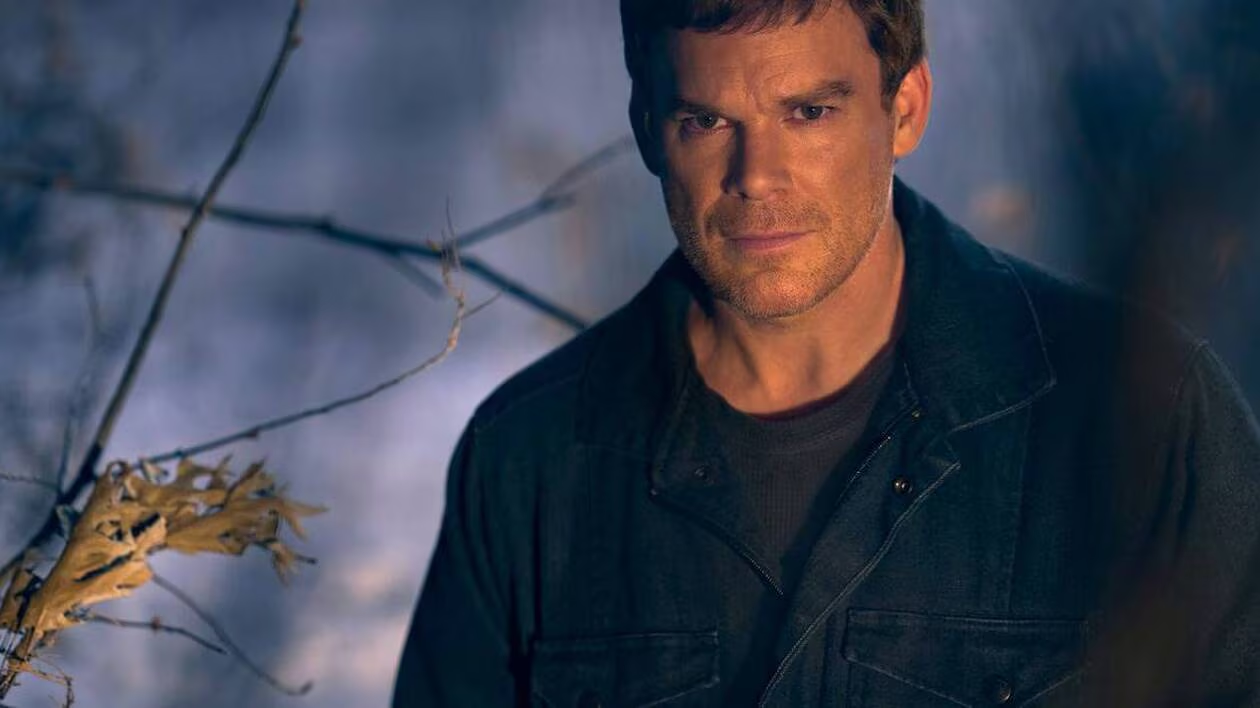
Dexter: New Blood Returns to Dark Roots in New Episode
After years of anticipation, Dexter: New Blood has finally arrived, and it’s clear the series is determined to bring the beloved serial killer back to his sinister roots. In the latest episode, “Backseat Driver,” Dexter Morgan is fully embracing his inner darkness, setting the stage for a thrilling and unpredictable journey ahead.
This episode masterfully explores Dexter’s dual nature, with the “Dark Passenger” firmly reclaiming control. The title, “Backseat Driver,” is a clever metaphor that encapsulates the constant internal struggle between Dexter’s public persona and his murderous alter ego.
One of the most intriguing elements of the episode is the direct nod to American Psycho‘s Patrick Bateman. Dexter adopts the false identity “Dr. Patrick Bateman” to order drugs for his victims—an intentional reference to the iconic character from the novel and film. This connection not only emphasizes Dexter’s own psychopathy but also sets the stage for a deeper exploration of the parallels between these two infamous characters.
Dexter Adapts to Technology — and Sets the Uber Trap
Navigating the unfamiliar terrain of New York City, Dexter is forced to adapt to a world increasingly shaped by technology. His shift to working as an Uber driver is both ironic and revealing: once a forensic expert in law enforcement, Dexter is now dependent on the very tools once used to catch killers like him.
Still, his old-school wit and investigative instincts prove invaluable. Dexter uses the same tech platforms that investigate him to track the “Backseat Driver”—the mysterious figure who has stolen his identity. This fusion of modern tools and Dexter’s classic methods highlights his ability to evolve and stay one step ahead.
His Uber trap is a strategic masterstroke. By exploiting the system that has disrupted his comfort zone, Dexter lures his target using the very mechanisms designed to monitor him. This calculated move not only reasserts Dexter’s control but hints at even more intricate, high-stakes confrontations to come.
The Investigator and Deeper Implications
Another compelling thread in the episode is the tenacious investigator who begins to connect the dots around Harrison’s involvement in recent incidents. Her intuition and analytical mind raise questions about her true background.
The way she reconstructs crime scenes mirrors Dexter’s own methodical style. This uncanny similarity suggests a potential kinship—or at least a mutual understanding of the darker side of human behavior. Could she harbor her own secrets? Could there be a twist where she and Dexter are more aligned than expected?
These questions build anticipation and complexity, setting up intriguing possibilities as the narrative continues to unfold.
A New Killer’s Club — and Dexter’s Dangerous Infiltration
One of the most exciting revelations in the episode is the suggestion that Dexter may infiltrate a new “killer’s club”—a group of serial murderers gathering under the guise of a high-society gala. This development could push Dexter further into morally murky waters, forcing him to operate within a group of individuals who mirror his darkest impulses.
Imagine Dexter navigating a room full of killers, hiding in plain sight, while planning how to eliminate them one by one. Can he blend in and survive? Or will the pressure and temptation of the “killer’s club” test the limits of his carefully constructed facade?
Adding further tension, the relentless investigator might uncover Dexter’s real identity just as he embeds himself within this secretive group. The possibilities are electrifying.
Fan Nostalgia and Dexter’s Legacy
A key strength of “Backseat Driver” lies in how it honors longtime fans while moving the story forward. Beloved characters like Angel Batista return, and signature moments—like the infamous “sugar donut” scene—are seamlessly woven into the plot.
The episode is full of nods to classic Dexter moments, satisfying longtime viewers while reinforcing the emotional and narrative ties that keep the fanbase deeply invested. Beyond the screen, the series encourages fans to engage through merchandise, media content, and social platforms—building an immersive community experience.
This well-executed fan service does more than evoke nostalgia—it reaffirms the series’ commitment to its core audience while evolving the narrative in bold directions.
Conclusion: Dexter’s Triumphant Return
“Backseat Driver” marks a thrilling return to form for Dexter: New Blood. It blends nostalgia, tech-savvy adaptation, and the promise of deeper, darker developments on the horizon. As Dexter embraces his killer instincts once again and new threats emerge, the series is poised to deliver one of its most compelling chapters yet.
With the re-emergence of the Dark Passenger, dangerous new players in the mix, and the looming threat of exposure, the ride is only beginning—and fans will want to buckle up for what comes next.













Publicar comentário